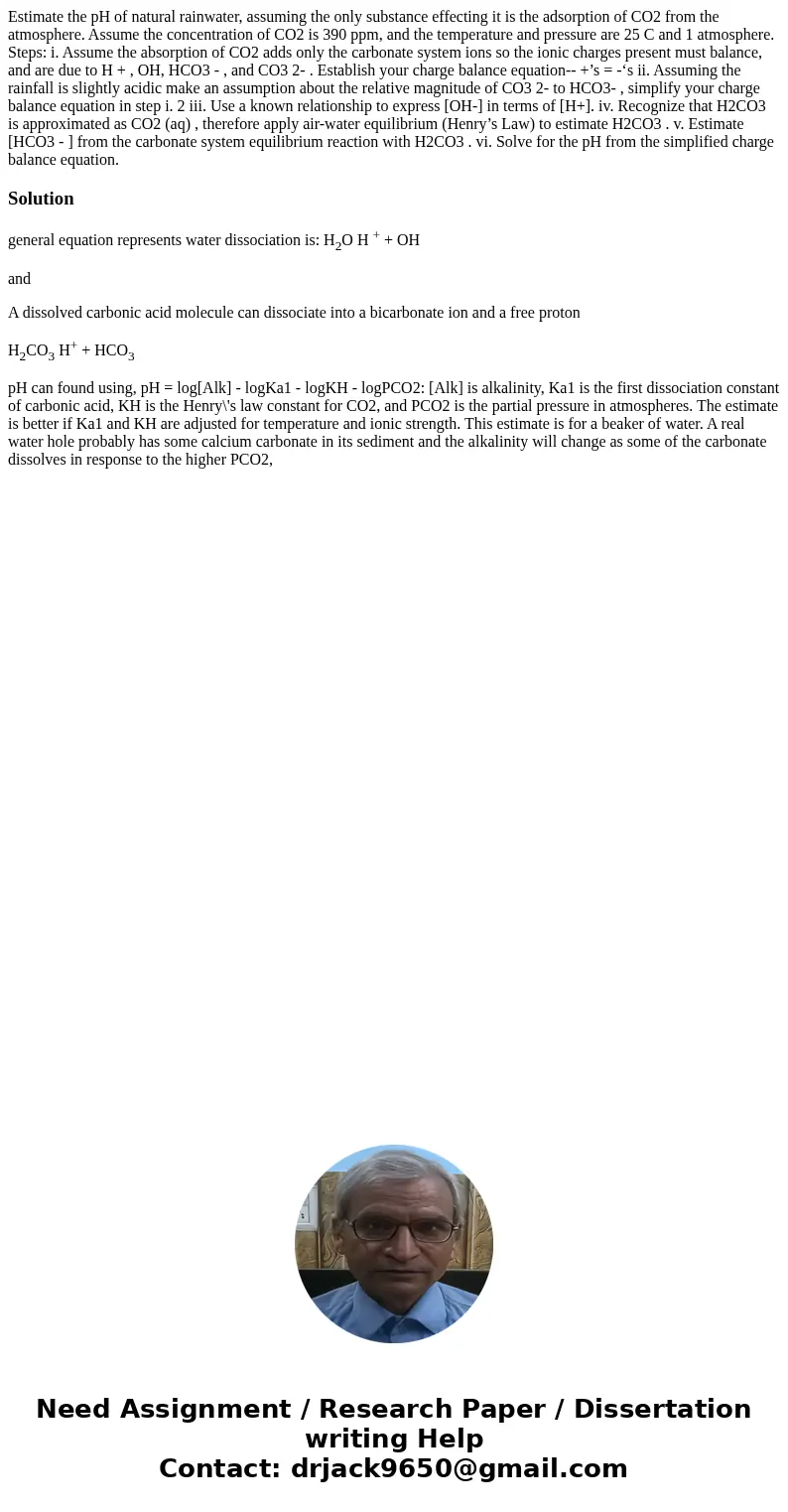Estimate the pH of natural rainwater assuming the only subst
Estimate the pH of natural rainwater, assuming the only substance effecting it is the adsorption of CO2 from the atmosphere. Assume the concentration of CO2 is 390 ppm, and the temperature and pressure are 25 C and 1 atmosphere. Steps: i. Assume the absorption of CO2 adds only the carbonate system ions so the ionic charges present must balance, and are due to H + , OH, HCO3 - , and CO3 2- . Establish your charge balance equation-- +’s = -‘s ii. Assuming the rainfall is slightly acidic make an assumption about the relative magnitude of CO3 2- to HCO3- , simplify your charge balance equation in step i. 2 iii. Use a known relationship to express [OH-] in terms of [H+]. iv. Recognize that H2CO3 is approximated as CO2 (aq) , therefore apply air-water equilibrium (Henry’s Law) to estimate H2CO3 . v. Estimate [HCO3 - ] from the carbonate system equilibrium reaction with H2CO3 . vi. Solve for the pH from the simplified charge balance equation.
Solution
general equation represents water dissociation is: H2O H + + OH
and
A dissolved carbonic acid molecule can dissociate into a bicarbonate ion and a free proton
H2CO3 H+ + HCO3
pH can found using, pH = log[Alk] - logKa1 - logKH - logPCO2: [Alk] is alkalinity, Ka1 is the first dissociation constant of carbonic acid, KH is the Henry\'s law constant for CO2, and PCO2 is the partial pressure in atmospheres. The estimate is better if Ka1 and KH are adjusted for temperature and ionic strength. This estimate is for a beaker of water. A real water hole probably has some calcium carbonate in its sediment and the alkalinity will change as some of the carbonate dissolves in response to the higher PCO2,

 Homework Sourse
Homework Sourse